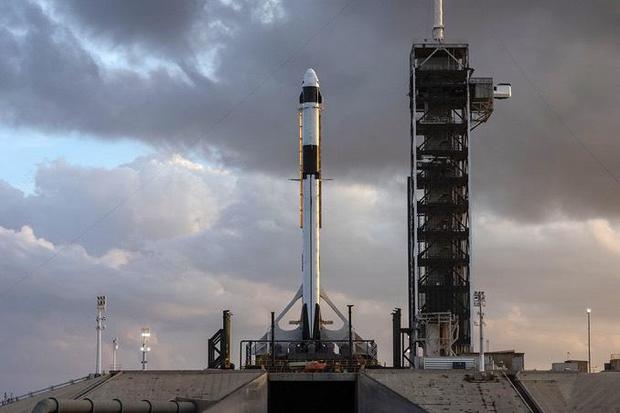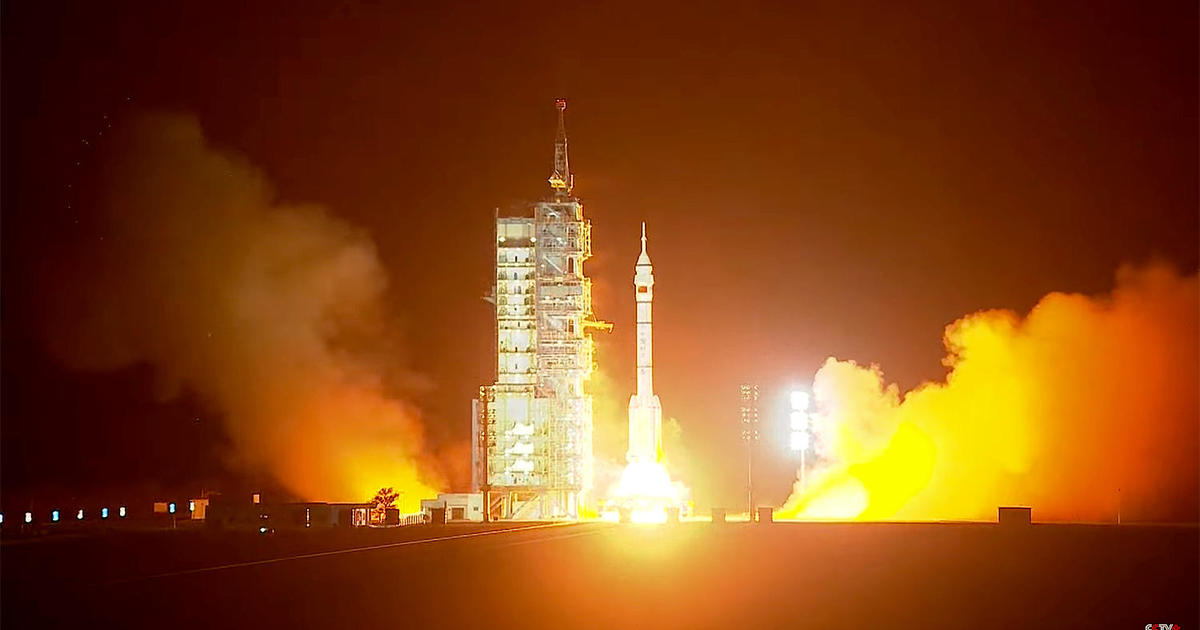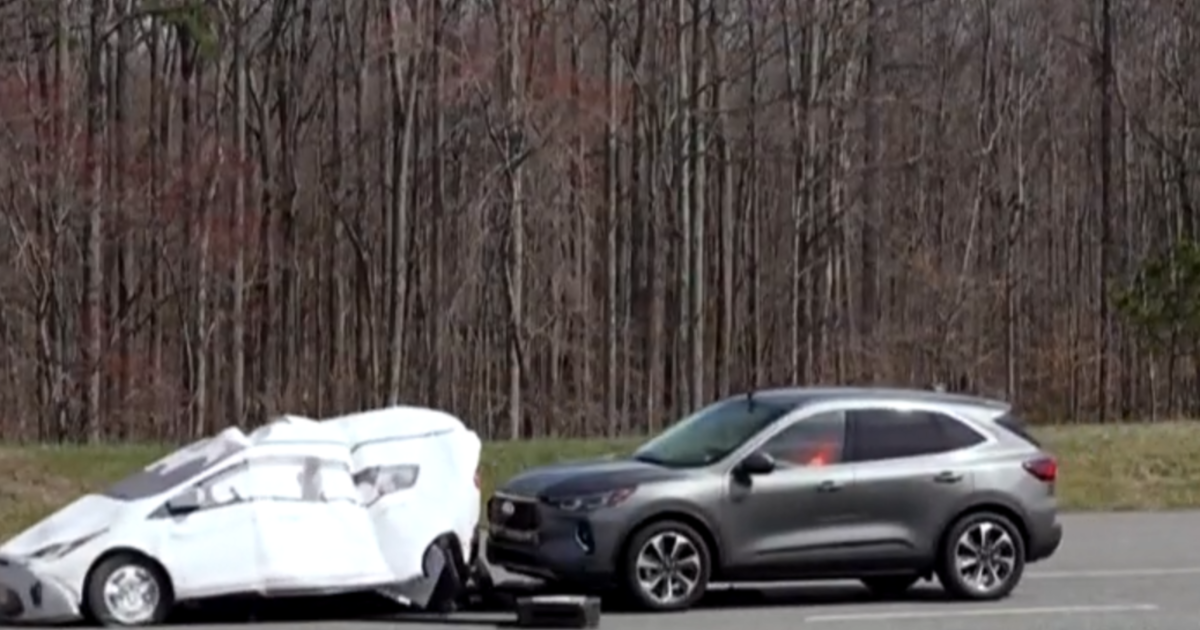NASA chief hopeful SpaceX could launch piloted Crew Dragon test flight in early 2020
NASA Administrator Jim Bridenstine visited SpaceX's California rocket factory Thursday, touring the sprawling facility with founder Elon Musk. He told reporters he is optimistic the company will be ready to launch the first piloted test flight of its Crew Dragon spaceship in the first quarter of next year.
Bridenstine admitted that his optimism is contingent on SpaceX having no major problems with upcoming tests of redesigned parachutes along with ground and in-flight tests of the Crew Dragon's powerful emergency abort system. A Crew Dragon capsule was destroyed in an explosion during a test of that system last April.
"This is a big deal for our country. We can't get it wrong and in fact, we have to get it right," Bridenstine said, standing with Musk in front of a clean room where Crew Dragon spacecraft are assembled.
"These are key messages that we believe it can be done in the first quarter of next year, but we are not going to take any undue risk because the safety of our astronauts and the success of the mission is the highest priority. And remember, this first flight with a crew is a test flight."
Bridenstine's visit came less than two weeks after Musk showed off SpaceX's futuristic new Starship launcher in south Texas, a prototype of a new rocket system he says will eventually replace the company's Falcon 9 and Falcon Heavy boosters.
The day before the event, Bridenstine posted a tweet many interpreted as a jab of sorts at SpaceX, implying the company needed to focus more on its NASA-funded Crew Dragon astronaut ferry ship, which has encountered technical problems and delays.
"I am looking forward to the SpaceX announcement tomorrow," Bridenstine tweeted. "In the meantime, Commercial Crew is years behind schedule. NASA expects to see the same level of enthusiasm focused on the investments of the American taxpayer. It's time to deliver."
At the Starship event and again on Thursday, Musk said SpaceX was only devoting about 5% of the company's resources on the new launch system and that Crew Dragon remains the California rocket builder's top priority.
"Crew Dragon is absolutely the overwhelming priority," he assured Bridenstine on Thursday.
Since the space shuttle's final flight in 2011, NASA has been forced to rely on Russia to ferry U.S. and partner astronauts to and from the International Space Station at prices that eventually climbed to more than $80 million per seat.
To end that sole reliance on Russia for space transportation, NASA announced on September 16, 2014, that SpaceX and Boeing would share $6.8 billion to develop independent space taxis — the first new U.S. crewed spacecraft since the shuttle was designed in the 1970s.
Both companies were required to fly two test flights — one unpiloted and one with a crew — before beginning operational crew rotation flights to the space station. NASA intended for one or both companies to be flying well before this year, but funding shortfalls in Congress and technical problems led to repeated delays for both companies.
NASA only has one more seat booked on a Soyuz, a flight scheduled for launch from the Baikonur Cosmodrome in Kazakhstan next March or early April. Depending on how long it takes Boeing and SpaceX to complete remaining tests and begin operational crew rotation flights, the space agency may be forced to buy additional Soyuz seats from Roscosmos, the Russian space agency.
"If everything goes according to plan, we may not need additional Soyuz seats," he said. While problems are not unexpected in a complex development program, "I will say we're getting very close and we're very confident that in the first part of next year we'll be ready to launch American astronauts on American rockets."
Boeing's first piloted test flight, whenever it flies, will carry a two-man one-woman crew to the station for a six-month tour of duty. The agency is considering an extension of some sort for SpaceX's first piloted mission to help keep the station fully staffed until operational flights commence.
SpaceX holds NASA contacts valued at $3.04 billion for 20 space station resupply flights using its Dragon cargo ships — 18 have launched to date — and another contract for an unspecified amount for at least six additional flights through 2024.
The company is building the Crew Dragon under a separate $2.6 billion contract. Like the earlier cargo version, the Crew Dragon capsule will ride into orbit atop the company's partially reusable Falcon 9 rocket and return to Earth with an ocean splashdown.
On March 2, SpaceX successfully launched a Crew Dragon on an unpiloted test flight — Demo-1 — to the space station. The same capsule then was to be launched on a short flight to test its Super Draco emergency abort system earlier this summer. But during a ground test April 20, the spacecraft exploded an instant before motor ignition, destroying the capsule and putting future flights on hold.
Engineers traced the problem to leakage in a valve in the propellant pressurization system, a major component in the rocket's engine. Musk said Thursday the system had been upgraded and redesigned to isolate the Super Draco plumbing from the capsule's lower-power maneuvering thrusters. Another ground test firing is expected later this month.
If the static firing goes well, SpaceX will launch the ship for an unpiloted in-flight abort test in November or December to demonstrate the spacecraft's ability to propel a crew to safety in the event of a catastrophic booster failure early in flight when aerodynamic stresses are most severe.
Those tests will come amid ongoing work to complete a series of parachute drop tests. If no major problems develop — and if extensive reviews with NASA confirm good results — the company will be able to press ahead with the launch of its first piloted test flight.
The first piloted Crew Dragon flight, known as Demo-2, will carry veteran NASA astronauts Bob Behnken and Doug Hurley, who served as co-pilot for the final shuttle mission in 2011. Both attended Thursday's event with Musk and Bridenstine and both expressed confidence in the company's ability to deliver a safe spacecraft.
"These things happen," Hurley said of the April explosion. "While it's disappointing, it also can be a real gift to the final design. ... The team mobilized incredibly, both on the NASA side and the SpaceX side, to come up with why this happened, what can we do to fix it, how can we rebuild the capsule and make it safer for crews in the future. And that's exactly what they've done."
Boeing, the station's prime contractor, is designing an Apollo-style capsule under a $4.2 billion contract. The CST-100 Starliner capsules will launch atop Atlas 5 rockets built by United Launch Alliance, a partnership between Boeing and Lockheed Martin.
The Boeing spacecraft is designed to carry four astronauts to and from the space station and to remain in orbit for up to six months before descending to a touchdown at one of five landing sites in the western United States.
After wrestling with problems with the capsule's parachute system, propulsion equipment and other issues, Boeing plans to launch a CST-100 around November 4 from White Sands, New Mexico, company officials said, firing its powerful abort motors at ground level to demonstrate the system's ability to propel a crew to safety after a catastrophic low-altitude booster failure.
Assuming that test goes well, Boeing plans to launch an unpiloted CST-100 atop an Atlas 5 from Cape Canaveral around December 17, kicking off the required test flight to the International Space Station.
The unpiloted test flight is known as "OFT," for orbital flight test. The first piloted test flight, known as CFT, will carry a crew of three: former shuttle commander Chris Ferguson, now a Boeing vice president, and NASA astronauts Mike Fincke and Nicole Mann.
It is not known when that mission might get off the ground, but sources say it likely will not happen before the spring time frame.






